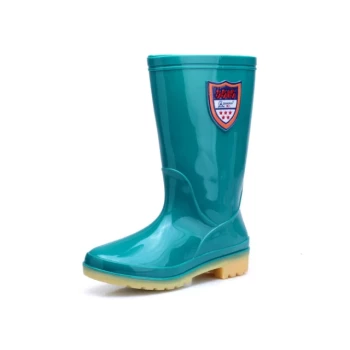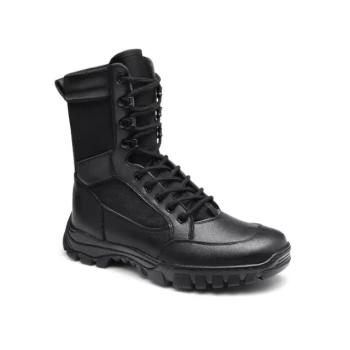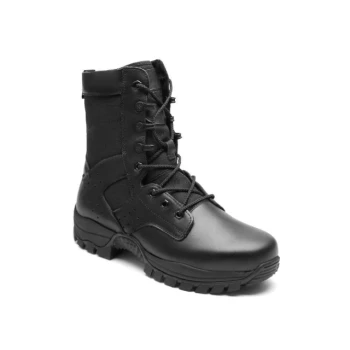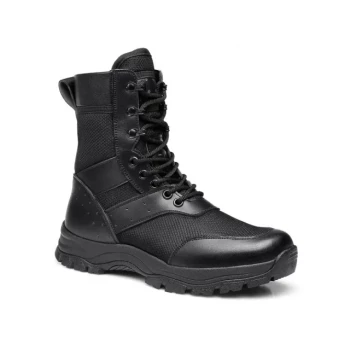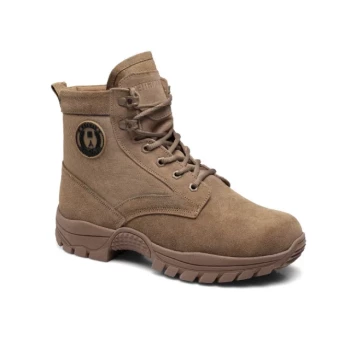At their core, traditional riding boots are purpose-built tools designed for a single function: safety and communication with a horse while in the saddle. Their design consists of a tall, seamless shaft without laces or zippers, a distinct heel for safety, a reinforced toe for protection, and a smooth sole for a quick release from the stirrup. Their primary limitation is a highly specific, non-adjustable fit that is unsuitable for many leg shapes and uncomfortable for extensive walking.
The classic design of a riding boot prioritizes rider safety and leg position above all else. This singular focus creates inherent trade-offs in terms of fit versatility, off-horse comfort, and ease of use.
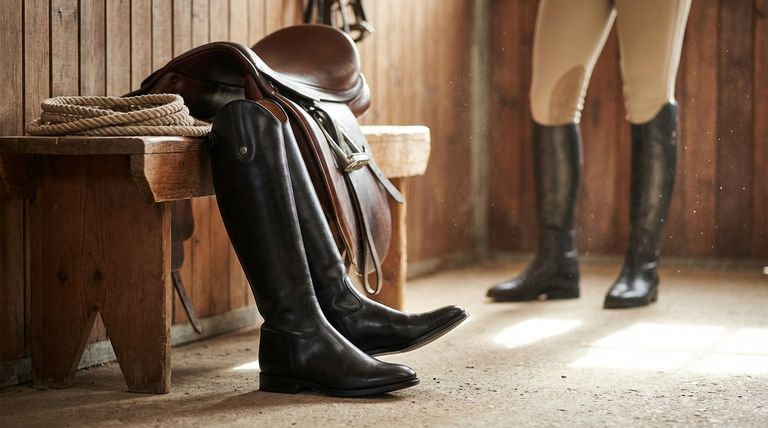
The Functional Anatomy of a Traditional Boot
Every element of a traditional riding boot is a direct response to the demands of equestrian activity. The design is less about fashion and more about physics, safety, and clear communication between horse and rider.
The Protective High Shaft
A tall shaft, rising to just below the knee, is the boot's most prominent feature. Its purpose is to protect the rider's leg from being pinched or chafed by the saddle's leather straps (leathers). This creates a smooth, firm surface for the leg to rest against the horse.
The Critical Safety Heel
The boot features a distinct heel, typically around one inch high. This is arguably the most important safety feature, designed to prevent the rider's foot from sliding completely through the stirrup. This minimizes the risk of being dragged in the event of a fall.
The Smooth, Unobtrusive Sole
The sole of a riding boot is intentionally smooth or very lightly textured. A deep tread, common on work or hiking boots, could easily get caught on the stirrup, creating a serious hazard. The smooth sole ensures the foot can slide free easily when necessary.
The Reinforced Toe
A sturdy, often reinforced, toe cap provides protection for the rider's foot when on the ground. Working around thousand-pound animals means feet are vulnerable to being stepped on, and the boot is the first line of defense.
The Defining Feature: A Pull-On Design
The absence of zippers or laces is a hallmark of the most traditional boot styles. This minimalist approach has its roots in both function and tradition.
Why No Zippers or Laces?
Historically, a seamless leg provided a cleaner look and a closer feel of the horse. More importantly, it eliminated any hardware that could potentially snag on equipment or interfere with the rider's leg aids.
The Role of Boot Pulls
Because there is no opening mechanism, these boots must be pulled on. They are often equipped with internal or external loops, known as boot pulls, which the rider uses to haul the boot up over the foot and calf.
The Consequence: A Rigid Fit
This pull-on design means the boot must be wide enough at the ankle and calf to allow the foot to pass through. This can result in a fit that is too loose in the ankle for some, while simultaneously being too tight in the calf for others.
Understanding the Inherent Limitations
The specialized nature of the traditional riding boot means it comes with significant trade-offs that are critical to understand.
Fit Is a Major Compromise
The pull-on style is the boot's greatest limitation. It is notoriously difficult to fit for riders with very high arches or wide, muscular calves. The boot must be wide enough to get on but narrow enough to provide support, a balance that is often impossible to strike without custom fitting.
Not Designed for Walking
The stiffness required for proper leg position in the saddle makes the traditional riding boot very uncomfortable for walking long distances. The lack of ankle flexion and the hard sole are optimized for the stirrup, not for movement on the ground.
Material Demands
Traditionally made from thick, durable leather, these boots require a significant "break-in" period to become comfortable. They also demand regular care and conditioning to maintain their integrity and water resistance, unlike modern synthetic alternatives.
Making the Right Choice for Your Goal
Understanding the design principles behind traditional boots allows you to select the right footwear for your specific equestrian discipline and needs.
- If your primary focus is formal competition (like dressage or hunters): The traditional, seamless pull-on boot is often required for its classic appearance and adherence to tradition.
- If your primary focus is daily training and convenience: A modern riding boot with a discreet zipper offers a much better fit for more leg shapes and is far easier to put on and take off.
- If your primary focus is all-day barn work that includes riding: Consider a hybrid "paddock boot and half chap" combination, which provides the necessary safety features for riding with significantly more comfort for walking.
Ultimately, choosing the right boot means matching its specific design to your anatomy and intended use.
Summary Table:
| Design Feature | Primary Function | Key Limitation |
|---|---|---|
| High, Seamless Shaft | Protects leg from saddle pinching | Inflexible, difficult to fit different calf shapes |
| Distinct Heel | Prevents foot from sliding through stirrup | Not optimized for comfortable walking |
| Smooth Sole | Ensures quick, safe release from stirrup | Provides poor traction on the ground |
| Pull-On Design | Eliminates snagging hardware (zippers/laces) | Results in a rigid, often ill-fitting ankle |
| Reinforced Toe | Protects foot from being stepped on | Adds to boot stiffness and break-in time |
Need riding boots that combine classic safety with modern comfort and fit?
As a large-scale manufacturer, 3515 produces a comprehensive range of equestrian footwear for distributors, brand owners, and bulk clients. Whether you need traditional pull-on boots, modern designs with zippers, or durable paddock boots, our production capabilities cover all types of riding footwear. We can help you provide the perfect boot for every rider's anatomy and discipline.
Contact us today to discuss your footwear needs and explore our manufacturing solutions.
Visual Guide
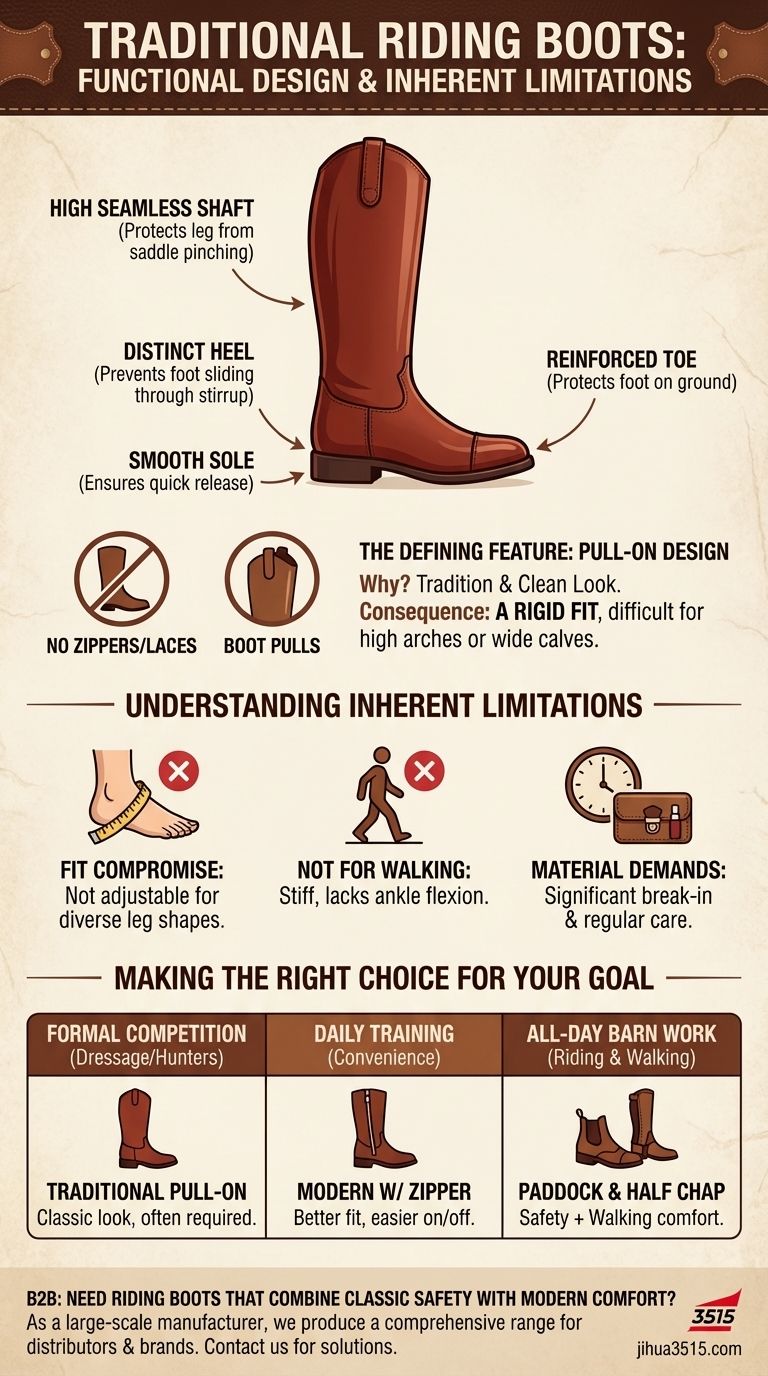
Related Products
- Factory-Direct Wholesale Canvas Boots with High-Traction Rubber Soles
- Safety Footwear Wholesale Manufacturer for Custom OEM/ODM Production
- Wholesale High-Traction Camo Boots - Custom Manufacturer for Brands
- Premium Wholesale Waterproof Safety Boots High Performance Protection for Industrial Markets
- Premium Grain Leather Safety Boots for Bulk Supply
People Also Ask
- What role do slip-resistant rubber materials play in safety shoes? Ensuring Grip and Stability in Hazardous Workplaces
- What are the advantages of rubber soles in safety boots? Unbeatable Grip & Durability
- Why is rubber a popular material for shoe soles? Unbeatable Grip, Durability & Value
- What factors determine the slip resistance of rubber-soled shoes? Tread, Compound & Design Explained
- Why is rubber commonly used for non-slip soles? The Science of Superior Grip












